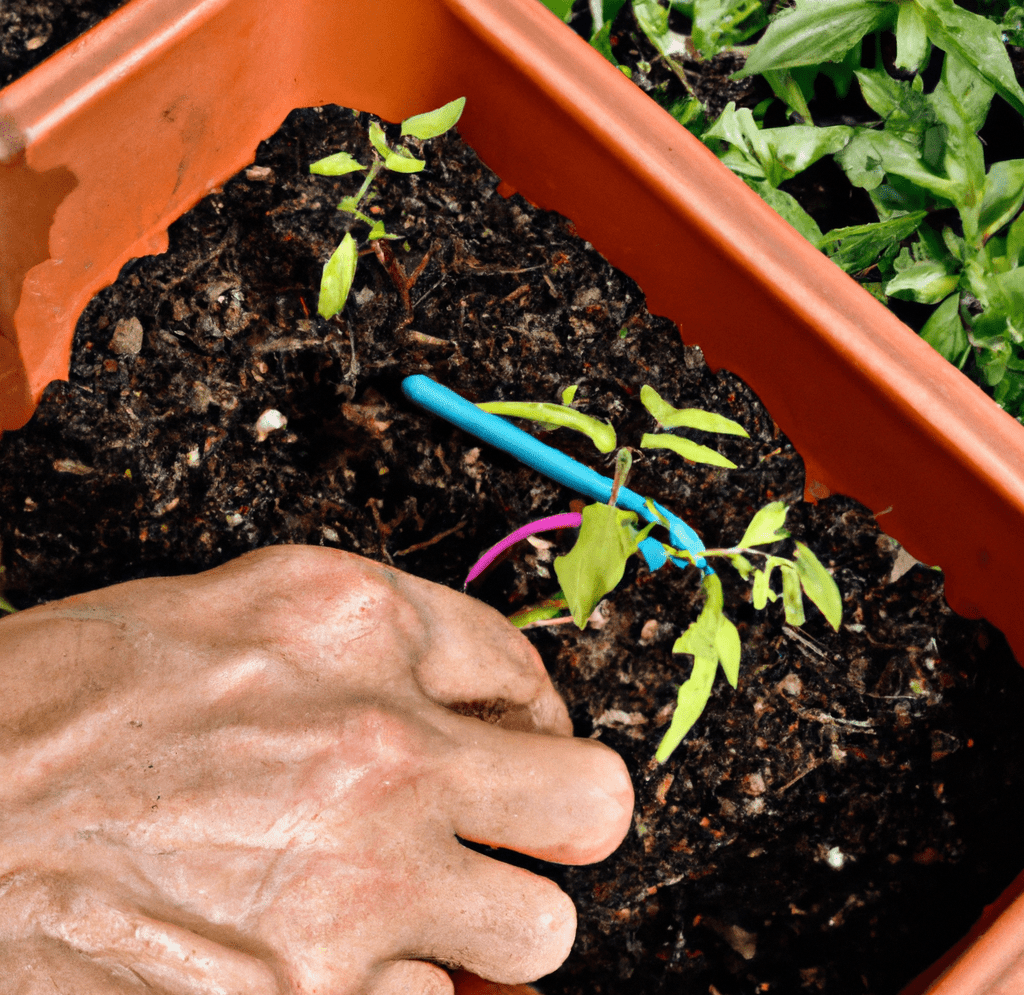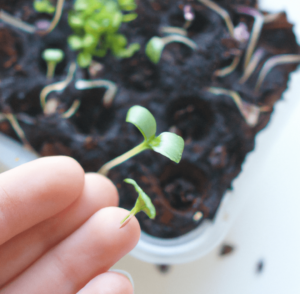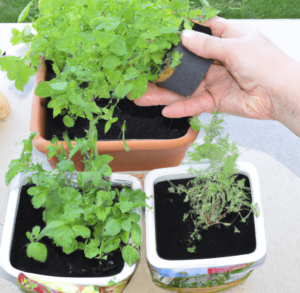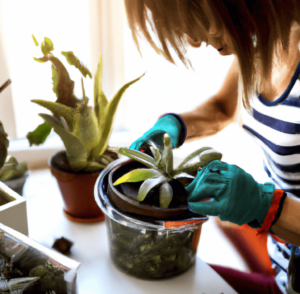A unique place in the history of gardening has been reserved for cultivars known as “heirloom” plants or heritage plants. Heirloom plants, as opposed to hybrid or genetically altered plants, maintain their original genetic make-up and add variety and a special flavor to your landscape. Learning how to grow heirloom plants is a rewarding type of gardening because you not only get to grow tasty vegetables but also help to preserve our agricultural heritage.

Choosing the Right Heirloom Plants
With so many gardening guides on how to grow heirloom plants successfully, it can be challenging to choose the right ones. Here’s what to keep in mind:
- Consider the soil and climate in your area. Distinct plants have different needs in terms of temperature, sunshine, and soil type. Be sure to select heirloom plants that will flourish in your area.
- Choose the vegetables that you want to grow. Tomatoes, peppers, beans, and many more vegetables are available as heirloom plants. Choose heirloom plants that will enable you to prepare your family’s favorite meals at home by considering their favorite foods.
- Look for trustworthy seed suppliers. When purchasing heirloom seeds, select a reliable retailer that specializes in heirloom plants. This will guarantee that you get top-notch seeds that will grow strong, fruitful plants.
- Pick plants with a track record of success. Look for heirloom plants in your area that have a history of successful cultivation by local gardeners. To select the best cultivars for your climate and soil conditions, get advice from other gardeners and study internet reviews.
Types of Heirloom Plants
There are numerous kinds of vegetables to pick from when it comes to heirloom plants each with its own distinct flavor and unique characteristics. If you want to learn how to grow organic plants and are drawn to heirlooms, here are the most popular types:
- Heirloom tomatoes vary widely in terms of their colors, sizes, and forms, from huge beefsteak tomatoes to delicious cherry tomatoes.
- Heirloom peppers range in flavor and spiciness, making them a terrific way to add flavor and variation to your recipes.
- Heirloom beans are available in a wide range of kinds, such as lima, black, and kidney beans.
- Heirloom squash plants produce a variety of flavors and purposes, from little zucchini to enormous pumpkins.
- Heirloom cucumbers are available in a range of sizes and forms, from delicious slicing cucumbers to pickling cucumbers with thin skin.
Whatever kind of heirloom plant you decide to grow, be careful to choose high-quality seeds from a trustworthy supplier.
Selecting Plants Based on Climate, Soil, and Light Conditions
As a gardener, you should be sure that the heirloom plants you select will flourish in the particular climate, soil, and lighting circumstances where you live after you learn how to grow heirloom plants. To do this, think about:
- Climate: When choosing heirloom plants, consider the local averages for temperature, precipitation, and humidity. While some cultivars prefer cooler conditions, others do well in warmer regions.
- Soil: The success of your heirloom plants can be significantly influenced by the type of soil you have. Choose cultivars that are suitable for your soil’s pH and nutrient levels by taking these factors into account.
- Light: Various heirloom plants require various amounts of direct sunlight. When choosing plants for your garden, take into account how much sun and shade it receives. Select cultivars that will receive enough light for healthy growth.
Remember, certain heirloom plants descended from parent plants that, over time, developed adaptations to particular growing environments which means that some cultivars can be more suited to your soil and environment than others. Choose heirloom plants with a track record of success in your region.
When to Plant Heirloom Plants
Timing is everything when it comes to growing heirloom plants. So, when do you plant the seeds after learning how to grow heirloom plants? Consider the following:
- Start with seedlings. A few weeks before the last anticipated frost in your location, you can start heirloom seeds inside or buy seedlings from a nearby nursery. This will give your plants a head start and increase the likelihood of a bumper crop.
- The best time to sow heirloom seeds, as well as the appropriate temperature range and the number of days to germination, are usually specified in the seed packaging instructions.
- Think about the variety. The requirements and growing habits of various heirloom plants vary. Some heirloom types work better for planting in the spring, while others work better for planting in the fall. When choosing when to plant, take into account each cultivar’s particular requirements.
Preparing the Soil
Whether you’re learning how to grow native plants or heritage ones, soil preparation is key. Follow these steps:
- Finding out about your soil’s kind, pH level, and nutrient concentration is the first step. You can use this information to decide which cultivars are ideal for your soil type.
- Think about any modifications you can make to the soil to raise its quality. To support the growth of your heirloom plants, this may entail adding compost, organic matter, or other soil amendments.
- Take into account the parent plant’s growing circumstances as well as any unique requirements for the cultivar you’ve selected.
Understanding Soil Types and pH Levels
Different soil types have different physical and chemical characteristics, which can have a significant impact on how well your heirloom plants do. The common soil types are clay, loam, and sand and you need to understand the following as you learn how to grow heirloom plants:
- pH levels: the acidity or alkalinity of your soil is determined by its pH level. Before planting, it’s crucial to ascertain the pH level of your soil because different heirloom plants like various pH levels.
- Parent plants: Some heirloom plants are descendants of parent plants that have evolved to thrive in particular soil types over many generations. When choosing heirloom seeds, take into account the parent plant’s developing circumstances.
- Soil needs: Each kind of heirloom vegetable has particular soil needs. Choose seed varieties that will flourish in your unique soil circumstances by taking into account the pH level, nutritional content, and soil texture.
Amending Soil for Heirloom Plants
As you learn how to grow heirloom plants, you may need to amend the soil to give your vegetables more chances for success. To do this:
- Start by testing your soil to find out its pH level and nutrient content. This will enable you to choose the soil amendments required to provide your heirloom plants with the best possible growing conditions.
- Compost, aged manure, or other organic matter can be added to the soil to help the soil’s texture and nutrient content. This is crucial for thick clay soils since they might be challenging for roots to grow in.
- pH levels can be adjusted by adding sulfur or lime, depending on whether your soil’s pH is too high or low.
- Depending on the number of nutrients in your soil, you might need to add fertilizer to give your heirloom plants the nutrients they need to thrive.
Planting
Now, it’s the planting stage. To do this, keep the following tips in mind!
- Invest in high-quality seeds by seeking out seed firms that specialize in heirloom varieties and have a good track record of generating such seeds.
- Plant each type at the proper time to promote the best development and productivity. Varying heirloom vegetables have different planting times, so be sure to plant each variety at the correct time.
- Maintain adequate spacing! The size and growth habits of heirloom vegetables can vary widely, so be sure to maintain the recommended spacing recommendations for each type.
- Heirloom vegetables need to be watered frequently because they might not be as drought-tolerant as hybrid or commercial varieties.
- Provide support as needed. To help them grow tall and robust, some heirloom vegetables, like tomatoes and peas, may require support.
You can enjoy a healthy, plentiful harvest of heirloom vegetables by using this planting advice for heirloom vegetables.
Proper Spacing
Learning how to grow heirloom plants means that you’re thinking about the proper spacing. Follow the specified spacing rules for each type because various heirloom fruits and vegetables require varying amounts of space. Typically, you may find this information in the seed packet or in gardening manuals.
When choosing the right spacing for your heirloom plants, keep in mind that the size and growth habits of these plants might vary considerably. Also, give your heirloom plants enough room to grow tall and robust. Enough space will also allow for sufficient air circulation, which can aid in the prevention of illness.
Depth for Planting
Your heirloom plants’ development and health depend on how deeply you plant them. Plant your heirloom seeds, as a general rule, two to three times deeper than their diameter.
However, depending on the cultivar and the soil type you are growing in, the precise planting depth may change which can be determined by an experienced gardener or by the supplier that distributes the seeds.

Watering and Care Instructions
Heirloom veggies need proper watering and attention to develop and stay healthy. To learn how to grow heirloom plants, water, and take care of them correctly, keep the following in mind:
- Follow recommended frequency: Because each variety of heritage vegetables has a different need for water, be careful to follow the suggested frequency for that particular variety.
- Provide appropriate drainage: Heirloom plants need adequate drainage to avoid root rot, so be sure to plant your heirloom vegetables in soil that drains well.
- Pay attention to the weather: Depending on the climate, heirloom plants may need more or less water, so monitor the situation and adapt your watering schedule as necessary.
Caring for Heirloom Plants
Heritage plants are frequently prized for their distinctive qualities, peculiar flavors, and vintage appeal and cultivars passed down for many years, frequently via families, just as heirloom foods and seeds. Learning how to grow heirloom plants is necessary for these plants to survive and keep their legacy alive:
Watering:
- Regular watering is necessary for heirloom plants, but it’s crucial to avoid overwatering them because this can cause root rot.
- Water the plants from the bottom up to prevent fungal growth. Avoid getting water on the leaves.
- Regularly check the soil’s hydration and only water when the soil seems dry to the touch
Fertilizing:
- The proper amount of nutrients is necessary for heirloom plants to develop and bear fruit that is nutritious.
- Apply a balanced, slow-release fertilizer according to the directions on the container.
- You can also use organic fertilizers like old manure or compost.
Deadheading:
- The act of deadheading involves removing dead blossoms from a plant.
- Promoting new growth can raise the plant’s output.
- Deadhead frequently maintains the plant’s appearance and encourages wholesome development.
Control of Pests and Diseases:
- Just like other plants, heirloom plants are vulnerable to pests and diseases.
- Keep an eye out for any symptoms of disease or infestation on your plants.
- Use natural pest management techniques, including neem oil or soap sprays, to get rid of pests and remove diseased leaves or stems.
Care requirements vary for various heirloom plants:
- To make sure your heirloom plants are growing and producing to their best potential, it is crucial to learn about the particular requirements of your plants, such as sunshine and soil requirements.
- While some plants, like lettuce and herbs, may need regular pruning to promote new growth, others, like tomatoes, peppers, and beans, may need staking or support.
Maintenance:
- Heirloom plant cultivation requires maintenance in order to maintain the health and vitality of the plants.
- Regular trimming aids in preserving the size and shape of your plants, while division aids in revitalizing aging plants and avoiding overcrowding.
- Another crucial component of upkeep for heirloom plants is seed saving since it protects their distinctive cultivars for future generations.
Bottom Line: How to Grow Heirloom Plants
Learning how to grow heirloom plants can be gratifying and a way to connect with gardening history. Understanding each cultivar’s unique requirements is crucial to ensuring its success in your garden, whether you are producing heirloom seeds or vegetables.
Your heirloom plants can thrive and produce to their maximum potential if you give them the proper amount of water, fertilizer, pest control, and deadheading on a regular basis. You can significantly improve your chances of success in cultivating heritage plants by learning about the particular requirements of each one and looking for extra information.
FAQs on How to Grow Heirloom Plants
What are heirloom plants?
Heirloom plants are varieties that retain their unique genetic makeup and give your garden variety a unique flavor. Heirloom plants, as opposed to hybrid or genetically modified plants, are prized for maintaining our agricultural legacy.
What benefits come with cultivating heritage plants?
Growing heirloom plants is gratifying because you get to raise delicious crops while also preserving our agricultural legacy.
How do you pick the best heirloom plants?
Select the vegetables you wish to grow, look for reputable seed providers, select plants with a proven track record of success, and take into account the soil and climate in your area.
What varieties of heritage plants are there?
The most well-liked heirloom plants include cucumbers, tomatoes, peppers, beans, squash, and beans.
How can I choose heritage plants based on the weather, the soil, and the amount of light?
Take into account your soil type, the local averages for temperature, precipitation, and humidity, as well as how much sun and shadow your garden receives. Pick heirloom plants that have a successful track record in your area.
When should heirloom plants be planted?
For the best results, plant heirloom seeds according to the recommendations on the seed packet a few weeks before the last anticipated frost in your region.
How can I make sure that heirloom plants flourish and produce to their full potential?
Investing in high-quality seeds from seed firms that specialize in heirloom varieties and have a solid track record of generating such seeds is essential to promoting optimal growth and productivity. Additionally, it’s critical to plant each kind at the right time, keep optimum spacing, water frequently, and offer assistance as required.
What rules should I follow when growing heirloom plants?
Heirloom plant planting instructions call for planting at the right time, maintaining a sufficient distance between plants, watering frequently, and offering support as necessary. Additionally, it’s critical to adhere to the suggested planting depth and the established spacing guidelines for each kind of heirloom plant.
How can I make sure my heirloom plants are spaced correctly?
It’s important to adhere to the guidelines for heirloom plant spacing, keep in mind that these plants’ sizes and development patterns might vary greatly, and provide the plants enough space to become tall and sturdy.
What planting depth is best for heirloom plants?
Depending on the cultivar and soil type, the optimal planting depth for heritage plants is typically two to three times deeper than their diameter.
How do I take care of and hydrate heirloom plants?
To grow and maintain health, heirloom plants require appropriate irrigation and maintenance. It is important to water your plants regularly, but it’s as important to prevent overwatering and stick to the suggested frequency for each species. To avoid root rot, adequate drainage is also essential, and the soil’s moisture content should be monitored frequently.
What are the recommended fertilization methods for heirloom plants?
To grow and produce fruit that is nourishing, heirloom plants require the right amount of nutrients. Use an organic fertilizer, such as compost or aged manure, in accordance with the instructions on the container, or a balanced, slow-release fertilizer.
What significance does deadheading have for heirloom plants?
Deadheading, which involves removing withered flowers from a plant, encourages new growth and boosts the plant’s productivity. Deadheading frequently promotes healthy growth and maintains the look of the plant.
How can I keep heirloom plants free of pests and diseases?
Like other plants, heirloom plants are vulnerable to pests and diseases. Use natural pest management methods, like soap or neem oil sprays, to get rid of pests and diseased leaves or stems. It’s also crucial to keep an eye out for signs of infestation or illness.







